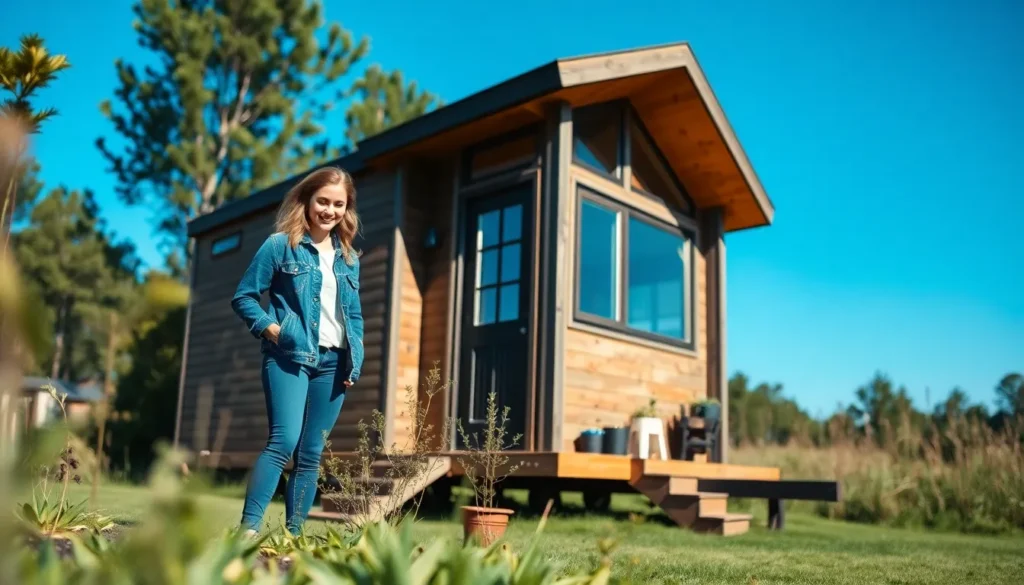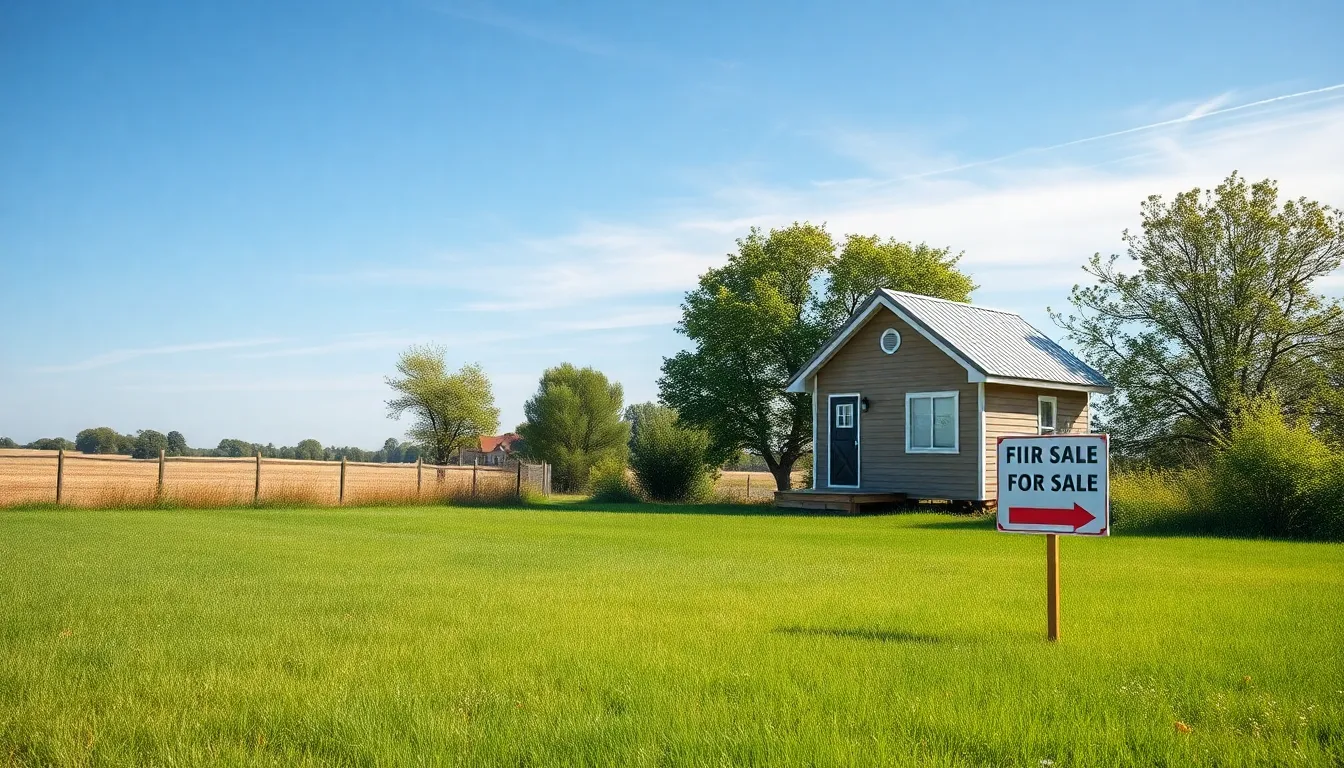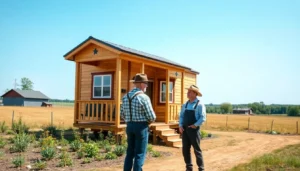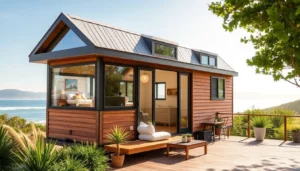Table of Contents
ToggleTiny homes are all the rage these days, and for good reason. They promise a simpler lifestyle, lower bills, and the chance to live your best minimalist life—without needing to hire a moving truck every time you change your mind. But before packing up your life into a pint-sized paradise, it’s crucial to understand what you’re getting into financially.
Overview of Tiny Homes
Tiny homes are gaining traction among various demographics seeking affordable housing alternatives. Many individuals appreciate the minimalism and sustainability that these compact dwellings offer. Cost efficiency stands as a key factor for potential owners, as tiny homes typically require less financial investment than traditional houses.
The average cost of a tiny home ranges between $30,000 and $60,000, depending on design and materials. Financial flexibility often attracts people to consider a tiny home as a viable living solution. Building a tiny home provides owners with the opportunity to customize their living space based on personal preferences and practical needs.
Tiny homes generally occupy 100 to 400 square feet, which further reduces utility expenses and maintenance costs. Locations play a crucial role in the overall cost; homeowners may find land prices vary significantly across regions. Zoning regulations can impact the feasibility of tiny home living, often requiring research before making decisions.
Financing a tiny home is an essential aspect that potential owners must evaluate. Some individuals secure loans designed specifically for tiny homes, while others opt for personal savings. It remains crucial to develop a comprehensive budget that encompasses construction expenses, land acquisition, and ongoing maintenance. Understanding the complete financial picture allows aspiring tiny homeowners to make informed choices.
Ultimately, the allure of tiny homes comes from their versatility and potential for a simplified lifestyle, drawing people from diverse backgrounds. Each decision made in the tiny home journey significantly influences the overall experience.
Initial Costs of Tiny Homes
Understanding the initial costs of tiny homes is essential for prospective owners. These expenses play a crucial role in the overall financial picture.
Land Costs
Land costs vary significantly based on location and zoning regulations. In urban areas, the price per square foot can reach as high as $250, while rural settings might offer plots for as little as $5,000. Purchasing land suitable for tiny homes may involve additional fees like permits and utilities. Financing this land often requires careful budgeting, especially given fluctuating market rates. Local regulations might also impact property taxes or additional assessments. The overall cost of land significantly influences the total investment in tiny home living.
Design and Planning Fees
Design and planning fees can add up to $2,000 to $10,000 depending on complexity. Customized designs typically attract higher fees compared to standard blueprints. Consultation with architects or designers helps ensure that the tiny home fits personal needs. Allow for costs associated with obtaining necessary permits, which vary by jurisdiction. Structural integrity and compliance with local codes are non-negotiable, necessitating professional input. Balancing aesthetic preferences with functional requirements often guides planning decisions. Efficient planning streamlines the construction process, ultimately impacting the project’s financial efficiency.
Construction Costs
Understanding construction costs proves essential for anyone considering a tiny home. Various factors like materials, supplies, and labor contribute to the overall expenses.
Materials and Supplies
Choosing the right materials impacts both the budget and sustainability of a tiny home. On average, expenses for quality materials range from $15,000 to $30,000, depending on the chosen style and finishes. Sustainable materials often cost more but yield long-term savings. Some common materials include wood, metal, and recycled elements, which can enhance durability. Prices for supplies such as insulation and roofing may vary. Budgeting for high-quality fixtures and energy-efficient systems remains a critical aspect of material selection.
Labor Expenses
Labor expenses typically account for a large portion of construction costs. Hiring skilled labor may cost between $25 and $75 per hour, depending on experience and local market conditions. Total labor costs can range from $10,000 to $20,000 for a complete build. DIY projects can reduce these costs significantly. However, professional assistance ensures compliance with local building codes and enhances structural integrity. Many DIY homeowners still opt for expert help with crucial tasks, balancing cost savings and quality assurance.
Ongoing Costs of Tiny Living
Tiny home ownership involves various ongoing costs that homeowners must factor into their budgets. Essential expenses like utilities and maintenance can differ significantly based on lifestyle and location.
Utilities and Maintenance
Utility costs typically include electricity, water, and waste disposal. Depending on usage and local rates, homeowners may pay anywhere from $100 to $300 monthly for utilities. Maintenance costs also arise, ensuring structural integrity and functionality. Regular upkeep might cost approximately $500 to $1,500 annually. Lifestyle choices, like composting toilets or energy-efficient appliances, can influence these expenses further, often resulting in substantial savings over time.
Insurance and Taxes
Tiny home insurance premiums vary widely, averaging between $300 and $1,200 annually. Factors such as location and coverage level affect these numbers. Property taxes also represent another financial commitment, which can range from $50 to $400 yearly, depending on the area. Some homeowners may lease land, which could incur additional costs, while others on purchased lots tackle property taxes directly. Understanding these factors plays a crucial role in ensuring a financially manageable tiny living experience.
Financial Benefits of Tiny Homes
Tiny homes offer significant financial advantages. Lower construction costs stand out as a primary benefit, with the average expense falling between $30,000 and $60,000. Savings arise not only from the reduced size but also from the choice of materials. Many owners opt for sustainable options, which, while initially more expensive, can yield long-term savings through efficiency.
Utility expenses tend to be lesser with tiny homes. Monthly costs generally range from $100 to $300, compared to larger homes. Maintenance also presents a reduced financial burden, often amounting to $500 to $1,500 annually. Making lifestyle choices like using energy-efficient appliances further contributes to lower ongoing costs.
Insurance premiums for tiny homes typically average between $300 and $1,200 each year. Homeowners experience lower property taxes as well, with costs from $50 to $400 depending on location. These lower financial responsibilities foster a manageable lifestyle.
Financing options exist for tiny homeowners, providing flexibility. Some individuals secure loans designed specifically for tiny homes, while others rely on personal savings. Creating a comprehensive budget that addresses construction, land, and ongoing expenses proves vital for anyone considering the switch to tiny living.
Tiny home living encourages mindfulness about financial commitments. This lifestyle attracts a variety of demographics drawn by the promise of affordable housing. Each decision made throughout the tiny home journey impacts overall financial well-being, reinforcing the appeal of this simplified lifestyle.
Conclusion
Tiny homes offer an appealing alternative for those seeking a simpler lifestyle and financial freedom. With an average cost ranging from $30,000 to $60,000 they provide a unique opportunity for affordable living. However potential homeowners must navigate various costs from land acquisition to ongoing utilities and maintenance.
Mindful financial planning is essential to ensure a smooth transition into tiny living. By understanding the full cost breakdown including construction expenses and potential financing options individuals can make informed decisions. Embracing the tiny home movement not only fosters minimalism but also encourages a sustainable lifestyle that resonates with many seeking change.








